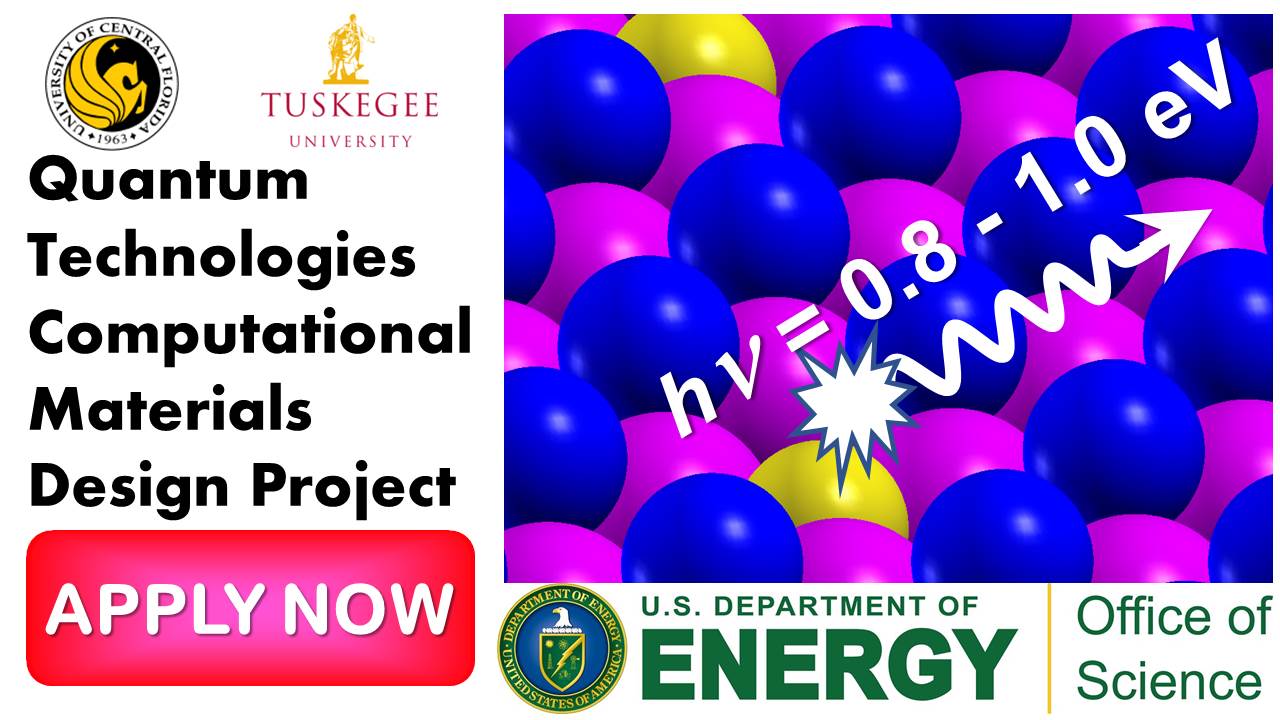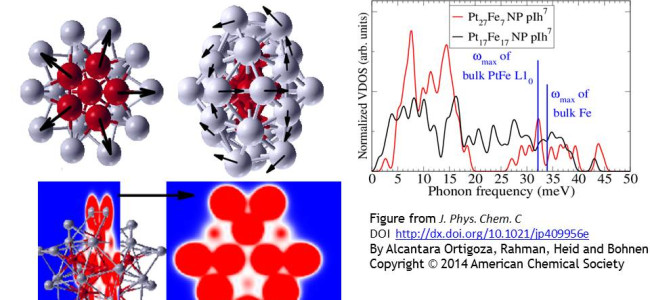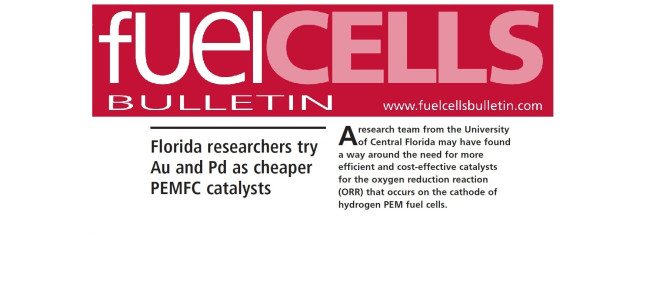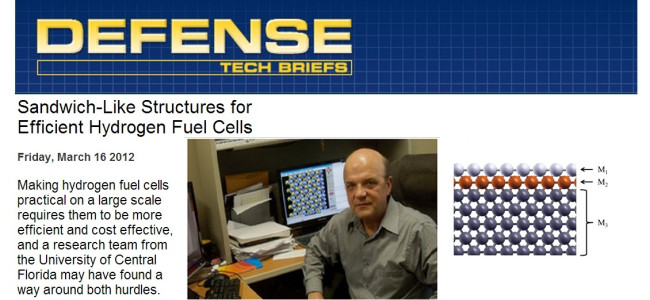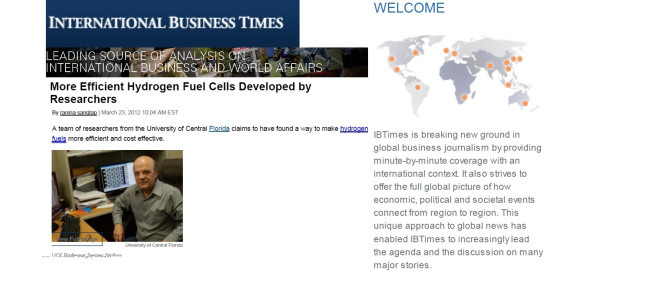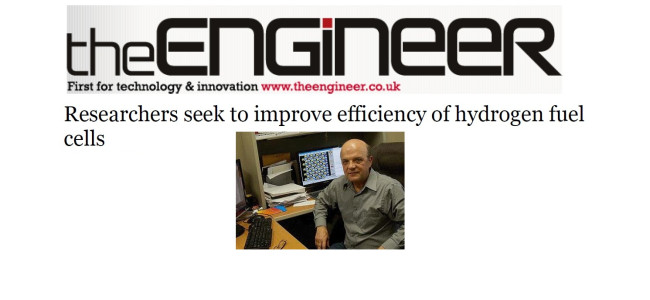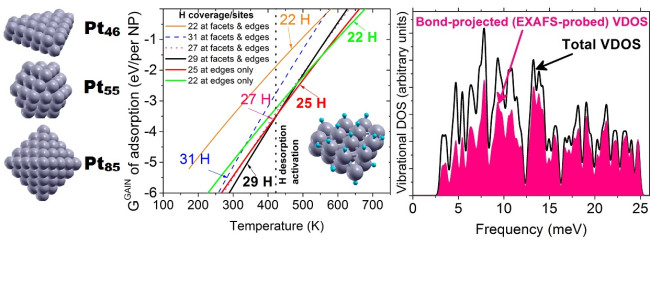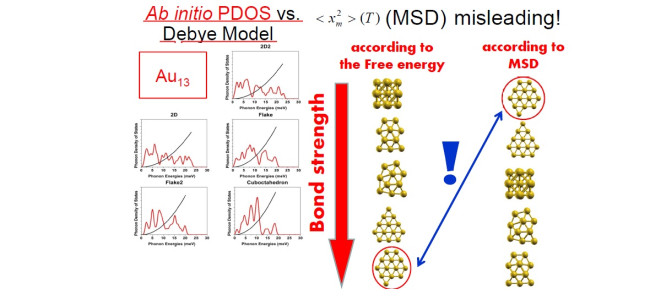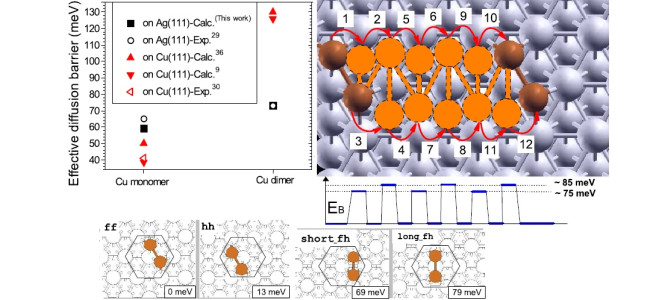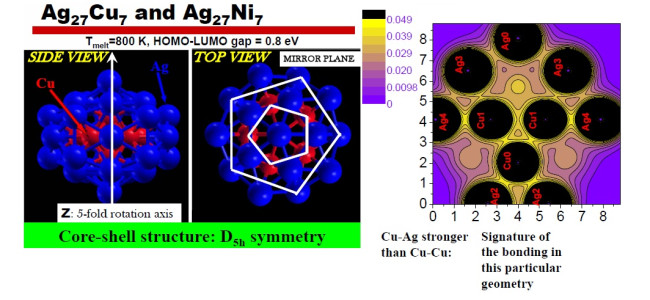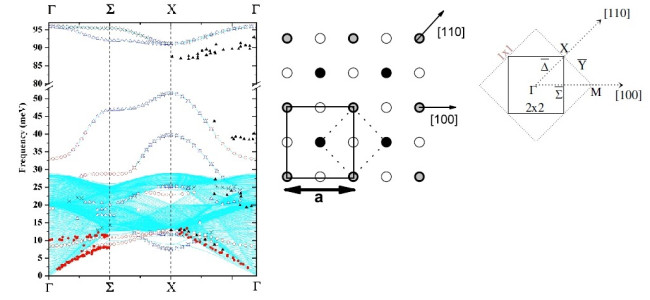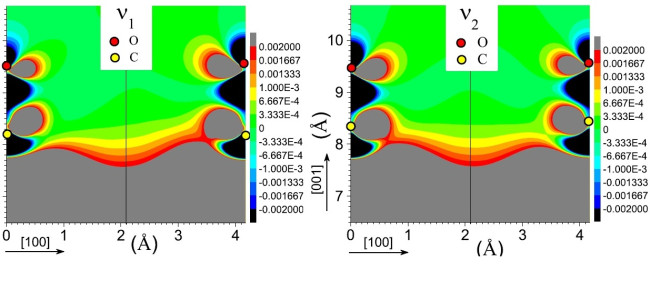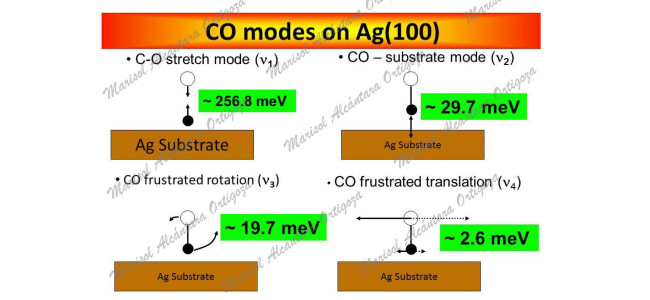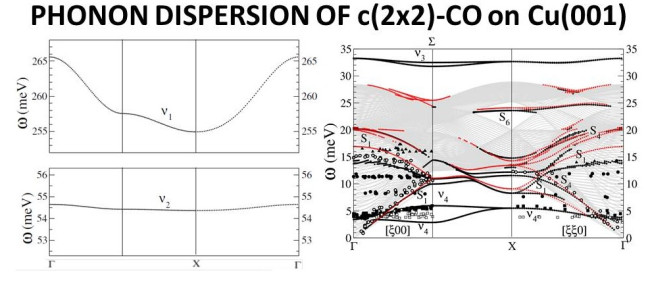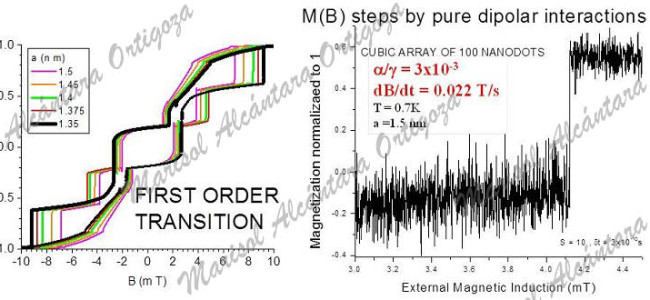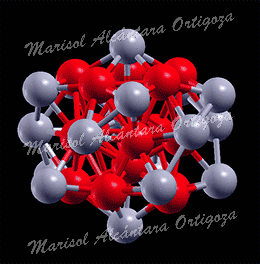Apr - 25 - 2014
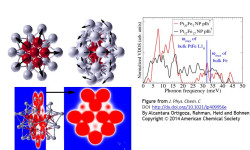
The low- and high-energy tails of the phonon density of states (PDOS) of transition-metal nanoparticles is enhanced with respect to that of their bulk counterparts. For particles in the sub-nanometer scale, we propose a rationale for this fact based on ab initio calculations of their charge density and of the frequency and displacement pattern of their vibrational modes. I find that the radial breathing and non-radial vibrations — analogous to […]
Jul - 24 - 2013
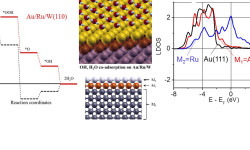
[J. Phys. Chem. Letts. 3, 463 (2012)] The hydrogen fuel cells convert chemical energy stored by hydrogen molecules into electric energy and the only product of this reaction is clean water. However, large-scale practical applications of these very promising sources of clean renewable energy are still restricted by unacceptably high cost of platinum-based catalysts that are used for the energy conversion. It is thus not surprising that during the past decade […]
Jul - 24 - 2013
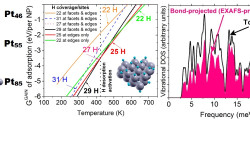
[Phys. Rev. B 84, 245438 (2011)] As experimentalist design better and better techniques to investigate nanoscale systems, anomalous electronic and thermodynamic properties for nanoparticles (NPs) continue being reported. Yet, despite several years of investigations, the origin of these effects was, until recently, still heavily debated. Among the inexplicable “anomalies”, I have focused on understanding those reported for Pt NPs, which include negative thermal expansion from 100 to 700 K, low mean-squared […]
Jul - 23 - 2013
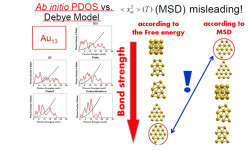
[J. Phys.: Condens. Matter 24, 104026 (2012)] Phenomena at the nano-scale are subjects of wide interest because of their fundamental and technological significance. Structure characterization, stability and thermal properties of nanoparticles (NPs) are, in their own right, topics of intensive research, and today’s physicists use state-of-the-art experimental and computational techniques to unravel them. In reference [1], however, I have directed a study that shows how thoughtlessly application of certain approximations is […]
Jul - 23 - 2013
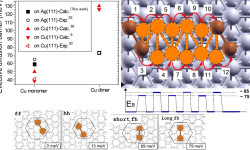
[Phys. Rev. B 82, 085405 (2010)] Understanding materials growth has been a subject of interest already for several decades. The dynamical processes involved in these phenomena in fact bear importance for several aspects of material science; metal oxidation rates and functionality (catalytic, magnetic, etc.) of supported heterogeneous materials when complex structural pattern formation become important, for example. The diffusivity of adatom clusters is long recognized as a critical controlling factor in […]


